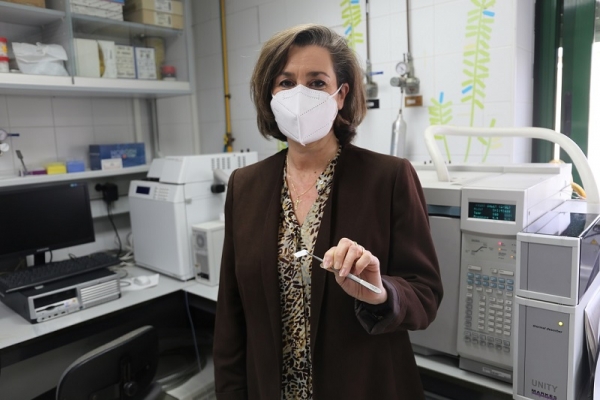The field of green analytical chemistry seeks to employ analytical procedures that are environmentally friendly without affecting the quick and efficient generation of results. The principles of green chemistry encourage the use of renewable energies and new materials in the design of the tools used in this field.
In the preparation of samples, for example, a type of treatment must be performed to separate analytes (the component that is of interest for the analysis) from the rest of the matrix prior to analysis. When wishing to determine the concentration and characteristics of ultraviolet (UV) filters in a water sample, the UV filters must first be separated from the sample using an extraction method. Depending on its design, different compounds will be extracted, but, what happens when a family of compounds displaysheterogeneous chemical behavior? There are two options: use an extraction methodology for each compound, or design a material that simultaneously detects a larger number of compounds.
In response to this problem, saving time in the extraction of compounds and reducing environmental cost, Marisol Cárdenas and Rafael Lucena, professors at the University of Cordoba’s Department of Analytical Chemistry, together with a team from the University of Valencia, have designed a material with two different interaction zones, allowing for the detection of a wide range of UV filters with different chemical behaviors in water samples in a single stage.
"The idea is to design this type of system in such a way that it is versatile enough to extract a family of compounds with wide-ranging chemical variability, reaching the lowest concentrationfor all of them," explains Cardenas.
The strategy designed consists of a paper base with two different substrates made of two polymers: nylon on one side, and polystyrene on the other. Thus, in the same system there will be two different substrates and some compounds (the mostapolar ones) will interact with the part that repels water and attracts neutral molecules (the hydrophobic part,made of polystyrene) and others (the most polar compounds) will interact with the other part, the one that attracts water (the hydrophilic part,made of nylon). In this way, "a greater number of compounds will be retained, despite their different chemical behaviors," says the researcher.
The extraction system designed by this apparatus is called Janus, in reference to materials that, in the field of chemistry, have two different interaction zones. Until now these had been used in the field of electrochemistry, but not in the field of sample preparation.
Lucena stresses the importance of using thesekinds of low-cost, easily recyclable materials because "although we chose nylon and polystyrene due to their different polarities, our group has experience in using recycled polymers when preparing our own materials. Moreover, in this case they can be easily found by recycling them from polystyrene or nylon fishing line". Thus, this method boasts significant potential for sustainability since, in addition to reducing the use of materials by simultaneously screening a wide range of compounds, it can also be designed using recycled elements.
Â
After using this type of Janus materials as an extraction unit for the first time, it was tested with UV filters, a very broad family that determinespolarity variability in order to check the results of this strategy, which was able to extract up to 14 different UV filters in seawater and pool samples. Considering that UV filters, added to cosmetics and other manufactured products, reach the environment and accumulate in different ecosystems, being able to gauge them in these types of samples is one of the focuses of environmental research.
Â
This article was produced within the framework of a National Network for Innovation in Miniaturized Sample Processing Techniques,coordinated by the FMQ-215 group at the University of Cordoba, with participation by the GICAPC research group at the University of Valencia.
Â
Benedé, J.L., Chisvert, A., Lucena, R.& Cárdenas, S. A paper-based polystyrene/nylon Janus platform for the microextraction of UV filters in water samples as proof-of-concept. Microchim Acta 188, 391 (2021). https://doi.org/10.1007/s00604-021-05047-x


